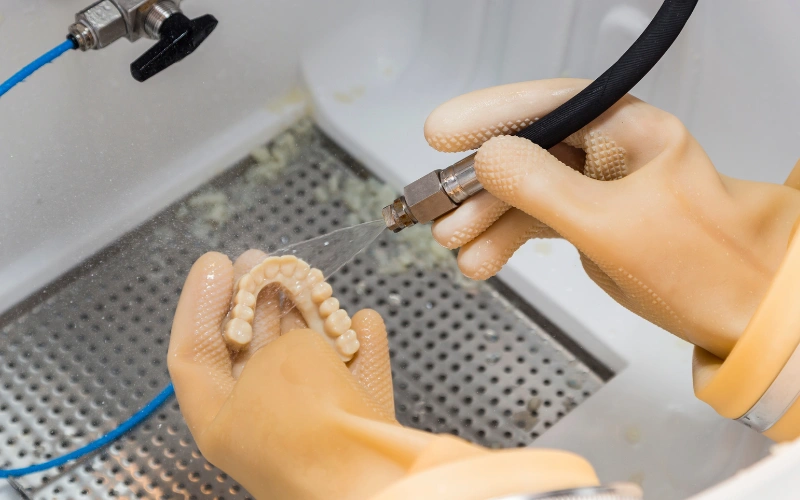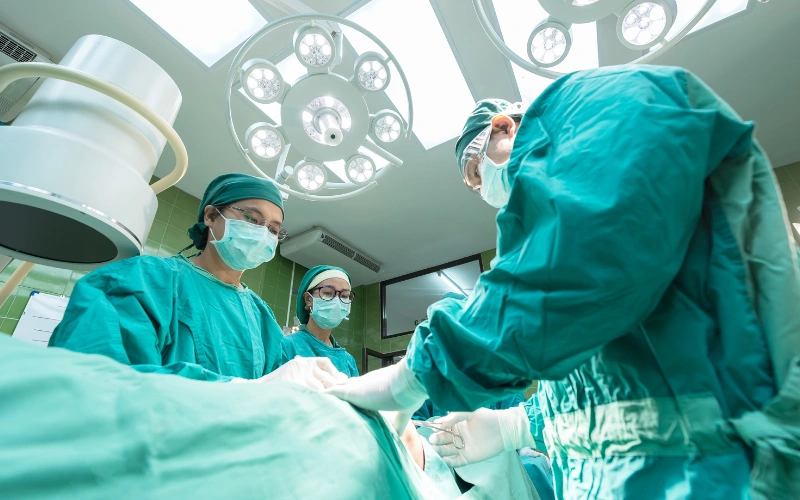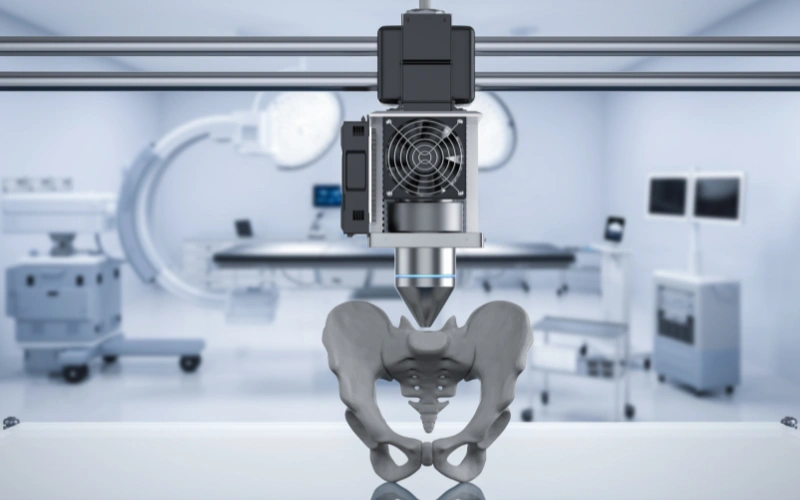The process of customizing healthcare with the help of 3D printing is revolutionizing the healthcare industry, as it would be impossible to imagine a world without 3D printing. This innovative technology is allowing us to create prosthetics, implants, surgical assistance devices, and even human tissues specific to the patient. By enabling the production of intricate and personalized medical devices, 3D printing is improving patient outcomes and lowering costs while improving surgical precision. While researchers are unlocking biological secrets to expand the capabilities of bioprinting, work to fabricate skin, tissue, and viable organs has accelerated. But innovation brings risks, too: legal, ethical, practical, and technical constraints. So read on to learn more about 3D printing and the future of medicine!
Custom Prosthetics: Enhancing Mobility and Accessibility
The production of prosthetics has been revolutionized with 3D printing, increasing affordability, weight reduction, and customization for patients. Traditional prosthetics are often expensive and time-consuming to create, but 3D printing offers the ability to prototype rapidly and customize designs.
For example, organizations like e-NABLE use 3D printing to manufacture prosthetic hands for children at affordable prices, all while ensuring they are functional. Advanced prosthetics now also integrate sensors and actuators, granting users greater control over their movements. 3D-printed prosthetics are a glimpse of ongoing advancements that are giving more mobility and accessibility to people all around the world.
Implants and Personalized Medical Devices
One of the most important advantages of 3D printing in terms of medicine is the ability to produce patient-specific implants. Bone implants for the skull, jaw, and other joints are now custom-made with extreme precision to ensure a perfect fit. An example of this is titanium 3D-printed implants, which are widely used in orthopedic and cranial surgeries, minimizing rejection and increasing the recovery of patients.
Moreover, manufacturers have begun to employ 3D printing technology to mass-produce hearing aids and dental implants, providing a faster and cheaper solution compared to traditional methods. As a result, these highly personalized medical devices can treat patients more efficiently with a perfect fit, practically integrating with body mechanics for suitable functionality.
Surgical Planning and 3D-Printed Tools
3D printing is being used by surgeons to print anatomical models of a patient’s organs or bones. Such models assist doctors in performing complex surgeries by providing a comprehensive 3D view of their patients, increasing the precision of validation, and shortening surgery timeand risk. For example, heart models produced with a 3D printer enable cardiac surgeons to practice complex operations before doing them on actual patients.
With that, 3D printing also allows, say, the surgery implementation of bespoke surgery appliances like clothes and clamps to get more precision during surgery. Under this directive, they assist in the workflow of surgical departments and drive enhanced patient care and increased complex procedure volume and success.
Advancements in Bioprinting: Printing Living Tissue and Organs
A branch of 3D printing, bioprinting is a technology that promises to print human tissue with bio-inks made up of living cells. The process has been used to print skin grafts, cartilage, and even blood vessels, which could have life-changing applications for burn victims and for reconstructive surgeries.
A bioprinting process will certainly help grow functional organs such as kidneys and livers, addressing the rising need for organ transplants. Although printing fully functional organs may still involve challenges, recent advances in bioengineering make this vision more attainable than ever. If successful, bioprinting could transform transplantation and rid people of long waits for donor organs.
3D Printing for Drug Development and Personalized Medicine
In the pharmaceutical industry, 3D printing is being used to create customized medications with exact doses for individual patients. They can print drugs whose active ingredients dissolve in a controlled manner, which can help make treatment more effective and improve patient adherence to the course.
For instance, Spritam, an epilepsy drug that the FDA approved and which is made via 3D printing, dissolves at a faster rate than pills on the market today, easing the swallowing process. Researchers are also investigating the possibility of printing multiple drugs into a single tablet, which could simplify medication regimes for patients with chronic diseases. This development is ushering in a more tailored approach to medicine.
Challenges in Medical 3D Printing
There are still a lot of challenges on the way to its wonderful potential. A significant barrier to widespread adoption is the regulatory approval process, as the safety and efficacy of 3D-printed medical devices must align with stringent healthcare standards. Additionally, quality control and consistency in the manufacturing of implants and prosthetics pose significant challenges due to their customization.
Moreover, printing functional organs through bioprinting is still a technically demanding and resource-intensive process, necessitating advanced inquiries in homologous and vascularized tissue engineering. The high costs of bioprinters and bioinks also restrict widespread use. Addressing these challenges will necessitate collaboration among scientists, regulators, and medical professionals to enable safe and effective implementation.
Ethical Considerations in 3D Printing of Medical Products
Ethical implications of 3D printing in medicine should also be taken into account. Printing organs and tissues is a preview of whether such things will be accessible—and if they are, whether they will be used wisely. Who gets access to bioprinted organs, and how?
Moreover, the potential for biohacking human body parts raises issues of cloning and bioethics. Guidelines on the ethical use of these technologies will be needed to help ensure that they are used responsibly. Transparency and fairness, as well as equitable access to 3D-printed medical solutions, will be imperative in avoiding any ethical dilemmas and ensuring the public maintains faith in this technology.
Future of 3D Printing in Healthcare
With technology continually advancing, the prospect of 3D printing in medicine remains bright, and research continues to shatter the barriers of what can be achieved. In the future, advances in bioprinting will be able to create new, fully functional organs, revolutionizing transplantation. AI-powered 3D printing approaches are streamlining medical device manufacturing as well, increasing both the accuracy and speed of these processes.
Moreover, combining nanotechnology with 3D printing may allow for more efficient drug delivery systems, as well as improvements in regenerative medicine. 3D printing will revolutionize healthcare more compellingly because it opens up new avenues for personalized yet affordable treatment as costs continue to fall and availability increases.
Conclusion
3D printing is revolutionizing the medical world by delivering personalized, affordable, and cutting-edge treatment options. As such, this technology is allowing for better patient care and outcomes, from prosthetics and implants to surgical tools and bioprinting.
Despite the current challenges, continued research and innovation are paving the way for a future in which personalized medicine, regenerative therapies, and printed organs become a reality, cementing 3D printing as an integral part of modern, actionably driven healthcare. Regulatory and ethical challenges need to be addressed in order to realize the full scale of 3D applications in building a patient-centered healthcare system.









